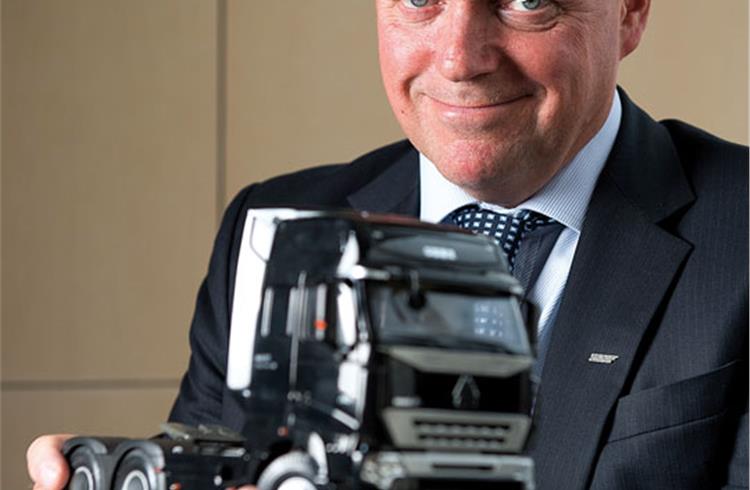2013 Lightweighting Special:SKF Light bearings for higher payloads
At SKF, lightweighting and friction reduction go hand in hand, says Amit Panday.
“Our lightweight bearings go into the gearboxes which are used by players like Volkswagen. Use of these efficient bearings results in weight reduction of gearboxes, making them easier to operate and a better fit for cars. We also have a whole range of wheel end bearings smaller in size compared to conventional bearings and can carry the same load,” reveals Stephan in a conversation with Autocar Professional. “In lightweighting, we have also developed the truck hub unit which is not currently sold in India. However, these hub units are a standard product in European countries. We developed this light hub unit by replacing the conventional heavy taper roller bearing setup (a heavy wheel hub) by a smaller, lighter truck up unit,” he explains.
“The effective low weight wheel hub developed by us offers a weight reduction by roughly 30 percent and finds application into a lot of passenger cars and light CVs in Europe,” says Torsten Nordgen, head of automotive division, SKF Asia. While lightweighting means slashing the weight of a component, in most cases, according to the experts at the SKF Group, the process requires downsizing in terms of product design. “To achieve lightweighting of any component, in most cases, the design changes would be required,” suggests Stephan. He believes that though the adoption of the new (lightweight) technology is faster in the case of cars, given the frequent evolvement of technology and components, in the truck segment, it tends to be slow as axles and gearboxes have a longer usage period. “That is the reason why the design changes in the truck segment are not able to catch up with the passenger car segment,” he adds. Nordgen explains that downsizing the powertrain by making the engine much smaller yet generating the same power with much lower weight along with the transmission system and wheels offers the maximum scope of cutting weight in any passenger car. “While the car’s outer shell is another area where weight can be reduced, the body made out of aluminium composites makes a huge impact on the total weight reduction parameter. The BMW i30 concept car uses a composite body, which is a case of extreme weight reduction. However, at the same time, these composite materials are very expensive,” explains Stephan.
At SKF, lightweighting and friction reduction efforts are made in conjunction to obtain a lower carbon footprint. “We are not only working in lightweighting but also in friction reduction wherein we develop energy efficient bearings with 30 percent lesser friction, which also directly impacts fuel consumption. At the same time, it is easy to achieve friction reduction in the bearings without making the design changes. Lightweighting and friction reduction are a part of the same trend,” Nordgen points out. Stephan adds that “at SKF Group, lightweighting comprises of nearly 10 to 20 percent of all automotive developments.”
Lightweighting is also gradually gaining prominence in the Indian market due to the price and fuel efficiency sensitive nature of buyers. Nordgen reveals that “while the key selling point in India is the fuel efficiency of the vehicle, all OEMs are very open to adopt lightweight technologies.” On the other hand, Stephan highlights the fact that the vehicles operating on Indian roads need a technological change. “For example, a regular CV wheel in India has a lifecycle of 50,000km unlike a million kilometres in Europe. Since India is a developing country, the technologies made in Europe will eventually come to India. Our aim is to see the vehicles in India from being maintenance-intensive to maintenance-free vehicles,” he concludes.
RELATED ARTICLES
Branded content: HL Klemove inaugurates first Local ADAS Radar Manufacturing Unit in India, marks a significant achievement in “Make in India” initiative
The inauguration ceremony was held in the presence of Vinod Sahay, President and CPO of Mahindra & Mahindra Ltd. and Dr....
BluWheelz to 'Green Up' logistics sector
With their EVs-as-a-service solution, the startup is playing it smart with costs and looking to electrify the entire seg...
BRANDED CONTENT: Spearheading the EV revolution in India
Jio-bp is a joint venture between Reliance Industries and BP PLC where both entities have married international expertis...





 By Autocar Pro News Desk
By Autocar Pro News Desk
 07 May 2013
07 May 2013
 2545 Views
2545 Views









